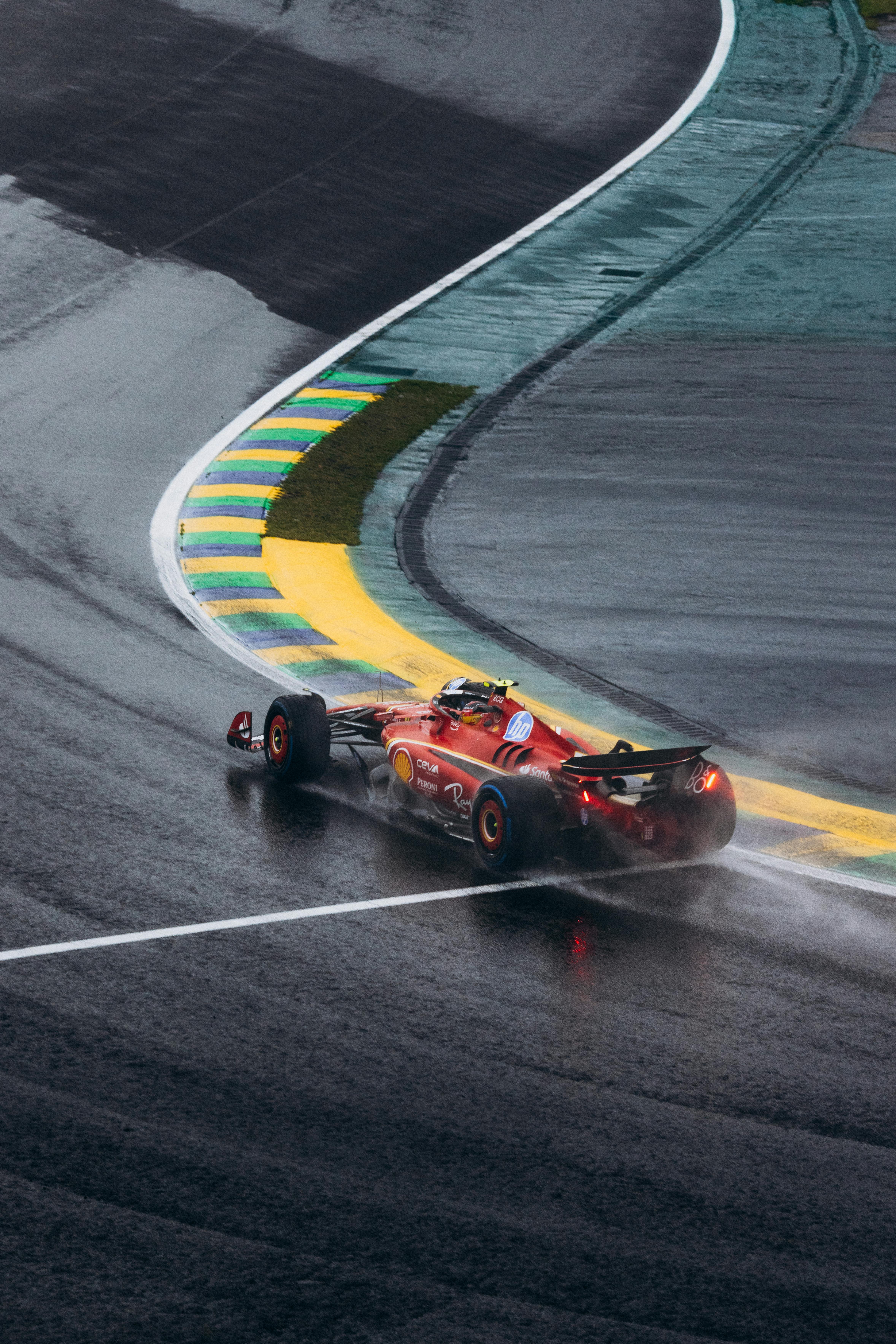
Apply Now
This naturally leads us to explore practical insights into the comic book industry, including publishing and marketing strategies that can help elevate your comic art.
 By understanding these components, you’ll be well-equipped to draw comics effectively using Marvel's techniques. Continue practicing, exploring your creative style, and pushing the boundaries of your storytelling to captivate your audience.
By understanding these components, you’ll be well-equipped to draw comics effectively using Marvel's techniques. Continue practicing, exploring your creative style, and pushing the boundaries of your storytelling to captivate your audience.

Essential Guide to How to Draw Comics the Marvel Way
Drawing comics has emerged as a powerful form of artistic expression, capable of telling intricate stories while captivating audiences. As we delve into the Marvel approach to comic creation in 2025, this guide aims to illuminate various techniques, styles, and processes vital for aspiring artists. Understanding how to draw comics involves a blend of artistic skills, storytelling techniques, and an appreciation for the unique elements that make superhero art resonate. Marvel comics have inspired generations of artists and storytellers. By mastering the essential drawing skills, dynamic poses, and character designs unique to the comic book genre, aspiring creators can transform their ideas into compelling visual narratives. This comprehensive guide will cover multiple aspects of comic creation, including character development, comic book scripting, and sequential art fundamentals. In this article, we will explore valuable techniques for drawing, inking, coloring, and creating compelling layouts that embody the essence of Marvel comics. Whether you're a beginner looking for solid drawing tutorials or an experienced artist wanting to refine your superhero art skills, this guide will provide insights into the comic book industry and ways to connect with your audience effectively. Here are the key takeaways from this exploration: - Techniques for drawing dynamic and engaging characters - Tips for effective comic storytelling and narrative structures - Insights into the comic book process and marketing strategies - Tools and methods to enhance your comic creation skills Let's begin our journey into the vibrant world of comic book illustration!Mastering Drawing Techniques for Comics
Building on the fundamentals of how to draw comics, we turn our focus to essential drawing techniques applicable to comic book illustration. Understanding these techniques is pivotal for achieving a distinctive art style and enhancing your storytelling abilities.Exploring Basic Drawing Skills
Every comic artist must have a solid foundation in basic drawing skills. This includes practicing shapes, forms, and proportions that are crucial in character and environment design. Regular sketching, utilizing reference images, and learning about character anatomy will foster proficiency in creating believable characters. Understanding different art styles in comics also can guide your practice as you define your unique approach. By engaging with different tutorials and drawing exercises, you can refine your abilities step by step. Regular practice aids in developing muscle memory, allowing for fluidity in your artwork. Additionally, participating in comic art workshops and networking within the comic community can provide feedback and support as you hone your skills.Dynamic Poses and Character Anatomy
Drawing dynamic poses is essential for any comic artist, as it adds life to your characters and makes action scenes more engaging. Understanding character anatomy is paramount when depicting movements. Start by studying muscle groups and how they interact during motion. This knowledge will bolster your confidence in portraying various poses, whether it’s a hero in flight or a character in a dramatic twist. Experiment with different perspectives and angles to capture dynamic action effectively. Implementing inking techniques and color theory also plays a crucial role in enhancing the visual impact of these poses. By mastering these elements, your comic will convey energy and excitement, which is vital for superhero narratives.Inking Techniques for Professional Quality
Once your pencil sketches are crafted, the next step is inking, which solidifies your drawings and lends a professional touch. Various inking techniques exist, including brush work and using fine liners, each creating different styles. Learning how to choose the right tools for inking—whether traditional or digital—will significantly affect the final look of your comics. Pay attention to line weights and textures as these can add depth and contrast to your artwork. Inking with precision will ensure that your characters and scenes stand out, making it easier for readers to engage with your story.Creating Compelling Comic Layouts
After mastering drawing techniques, the next step in comic creation is to focus on panel composition and layout. A well-structured comic layout is essential for guiding readers through the narrative seamlessly.Understanding Panel Flow in Comics
Panel flow refers to the visual movement from one panel to another. This is critical as it guides readers on how to read the story visually. Designing an effective panel arrangement involves considering the pacing of your story and the emotional beats you wish to convey. Experiment with different panel sizes and placements to find the best way to express the narrative rhythm. Your goal should be to create a visual experience that complements the story while maintaining reader engagement.Scene Transitions for Effective Storytelling
Transitioning between scenes is an essential component of comic book storytelling. This can be achieved through clever panel arrangements, fading effects, or incorporating visual humor. Effective transitions keep the story flowing smoothly while maintaining the reader's interest. Consider using various storytelling techniques, such as flashbacks or parallel narratives, to deepen your narrative layers. These approaches not only enhance character development but also enrich the overall plot.Creative Use of Colors in Comics
Coloring for comics is a powerful tool that can evoke emotions and set the tone for scenes. Understanding color theory and applying it effectively in your artwork can significantly enhance storytelling. Different colors can signal emotional shifts and help establish the atmosphere. Experiment with various color palettes to find your unique voice. Digital comic creation offers a range of tools to enhance and manipulate colors, allowing for more experimental approaches. However, clarity should always remain a priority to ensure that your comic is easy to follow.Engaging with Your Audience: Stories through Art
With the technical aspects of comic book creation covered, engaging effectively with your audience is crucial. Building a connection with readers is the foundation of a successful comic.Developing Engaging Comic Narratives
Creating engaging narratives requires thoughtful construction of your characters and story arcs. Consider the emotional journeys of your characters and allow their developments to reflect your story's themes. Audience engagement can be further achieved by creating relatable characters that reflect diverse backgrounds and experiences. Use storytelling techniques to keep your audience invested in the characters and their journeys. Incorporate twists and turns in your plot to maintain interest and evoke discussions among your readers.Drawing Character Dialogues and Relationships
Character dialogue is fundamental in comic storytelling. Writing impactful dialogue can bring characters to life while conveying their personalities and motivations. Study character arcs and interactions to make dialogues more engaging. Incorporate visual elements that support the dialogue, such as facial expressions and body language, to create a richer reader experience. This layering of text and image is what makes comic storytelling unique.Connecting with Readers through Comic Conventions
Comic conventions offer an excellent opportunity to showcase your work while connecting with other artists and potential readers. Attend events to network, gain insights into current trends, and gather feedback on your work. Engaging with the community can lead to valuable relationships, collaborations, and insights that could elevate your work. —Navigating the Comic Book Industry
In the ever-evolving world of comic books, understanding the industry landscape is crucial for aspiring comic artists looking to turn their passion into a career.Comic Book Publishing Insights
Understanding the various comic book publishing platforms is essential for distribution. Familiarize yourself with the dynamics of self-publishing versus traditional publishing, as well as digital comic platforms, to determine the best route for your work. This knowledge will empower you to make informed decisions about how to share your stories with comics fans. Consider the logistics of marketing your comic effectively. This includes defining your target audience and understanding how to communicate with them. Utilize social media and comic events to promote your work, gaining visibility in an increasingly competitive market.Building a Comic Portfolio
As an aspiring artist, developing a professional portfolio is indispensable. Your portfolio should showcase your best works and reflect your artistic style. Including a variety of characters, genres, and formats demonstrates your versatility and attracts diverse opportunities. Seek feedback from mentors and peers to refine your portfolio continually. Ensure that it's not only about your finished pieces but also includes sketches and thumbnails that exhibit your creative process.Collaborating with Other Creators
Collaborations are common in the comic book community, opening doors to new artistic challenges and experiences. Partnering with writers, colorists, and other artists can enhance your craft and expand your exposure. Understanding how to pitch your ideas and work collectively on comic projects can be beneficial for your career growth. Exploring opportunities for comic book collaborations can enrich your storytelling abilities and broaden your network within the industry. Embrace the chance to learn from others, fostering a welcoming environment in the comic community.Q&A Section: Common Questions in Comic Book Creation
What are the best techniques for drawing dynamic poses in comics?
Mastering dynamic poses involves studying human anatomy and movement. Utilize reference images and practice sketching in motion to create lifelike expressions. Work on capturing exaggerated actions to enhance the excitement of your scenes.How do I develop engaging characters for my comic?
Character development begins with establishing distinct traits and backgrounds for each character. Craft arcs that allow them to evolve throughout the story, making them more relatable and interesting to your audience.What are the key components of effective comic storytelling?
Effective storytelling in comics relies on a balanced combination of visual elements, character arcs, and narrative structure. Ensure that each panel adds value to the story, maintaining reader engagement through compelling visuals and impactful dialogue.How can I effectively market my comic?
Utilize social media platforms, create a website, and attend comic conventions to market your work. Engage with your audience regularly and consider crowdfunding opportunities to gauge interest and financial support.What resources are available for aspiring comic artists?
Numerous resources, including online drawing tutorials, community workshops, and networking events, are open to aspiring artists. Seek out mentorship opportunities and join comic art communities for guidance and inspiration. — By understanding these components, you’ll be well-equipped to draw comics effectively using Marvel's techniques. Continue practicing, exploring your creative style, and pushing the boundaries of your storytelling to captivate your audience.
By understanding these components, you’ll be well-equipped to draw comics effectively using Marvel's techniques. Continue practicing, exploring your creative style, and pushing the boundaries of your storytelling to captivate your audience.
Conclusion: Your Journey in Comic Creation
Throughout this guide, we've navigated various techniques, tools, and insights into the captivating world of comic book illustration. By focusing on how to draw comics, developing unique characters, and mastering comic storytelling, you can tailor your approach to create engaging narratives. The skills, techniques, and strategies discussed in this guide serve as a powerful foundation for your journey in the comic book industry. Embrace the adventure of comic creation, continue honing your craft, and let your stories inspire and connect with readers around the world. —